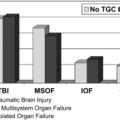The Impact of Health Care Reform on Surgery
I recently had the opportunity to critique the 2010 Affordable Care Act (ACA) [1]. I documented that the 3 pillars of health care delivery—quality, cost, and access—were flawed in the old health care model. Unfortunately, the ACA does not adequately address these 3 issues. I also pointed out that cost is the number one problem, not quality. Cost is negatively affected by the bureaucracy of our health care system because of waste, fraud, and loss of value. The cost of the medical bureaucracy is staggering. In the United States, it is $1059 per capita per year. In contrast, in Canada it is $307. In the US health care system, administrative workers account for 27.3% of total health care costs. In Canada this figure is 3.1%. If the United States had a single-payer system, this would save $375 billion a year in health care costs according to a 2003 article in the New England Journal of Medicine [2]. The authors of this study estimated there are 1 million workers (specifically middlemen) who are doing unneeded work.
There is support of the previous points from the Congressional Budget Office (CBO), which in December of 2008 printed “Key Issues in Analyzing Major Health Insurance Proposals” [3]. Administrative costs are addressed, which are restricted to marketing costs, medical activities, and general administrative costs. By their calculation, administrative costs totaled $90 billion in 2006, of which $24 billion was for marketing and related costs, roughly $14 billion was for medical activities, and about $52 billion went toward general expenses. The CBO also documents variation of administrative costs, which vary significantly by the size of the firms, from about 7% for firms with at least 1000 employees to 26% for firms with 25 or fewer employees. They do not address the issues raised by Himmelstein and colleagues [2] in the previous paragraph.
Another issue that was not completely addressed by the current health care reform bill is access. The new health care reform bill will not completely address the 44 to 50 million people who have no health insurance; in fact, there will be at least 12 million people who will not have access to the new health care system except through the emergency room. One of the more contentious aspects of the health care reform bill is the mandatory component that forces Americans who are self-employed or cannot get health insurance to buy it through the open market. There will be some subsidies for such insurance. Nevertheless, it is estimated that at least 12 million people will still not have access. This number is distorted because it does not include the immigrants and illegal aliens who are in our country and have difficulty in getting access to health care. Another group of people who have difficulty with access has been documented by Dr Richard Cooper of the Leonard Davis Institute of Health and Economics at the University of Pennsylvania [4]. He points out that the inner-city poor not only do not get access on a timely basis but also have variability in their care, which leads to bad outcomes, usually at higher costs.
Safety net hospitals
Shown in Table 1 is a breakdown of hospitals in the current health care delivery system. There are two categories: not-for-profit municipal and for-profit HMOs. The ones with asterisks are the traditional safety net hospitals, which care for patients who have no insurance both on an emergency basis and, in many instances, on a chronic basis. I think an excellent example of the role safety net hospitals play is in trauma care. Data from the American College of Surgeons Committee on Trauma shows that in the level I and II trauma centers, 21% of patients are self-pay, which is a euphemism for no pay. Medicare constitutes 17% of the trauma patients, and Medicaid constitutes 14%. Although the situation varies from trauma center to trauma center, it can be appreciated that it could amount to up to 52% of all trauma patients. Obviously, Medicare and Medicaid pay some dollars, but rarely pay for patients’ entire costs while in the hospital. However, economists and surgeons at the University of Michigan have shown that with excellent management, trauma patients can either break even for the hospital or actually bring in revenue [5–10]. Transplantation is another system of care that surgeons not only support but more often than not provide leadership for safety net hospital programs. These patients are often on Medicare or Medicaid programs. Some have full insurance. Under the ACA, there is no public option. One can only ask how this is going to play out in regards to where trauma care and transplantation are provided. Although one can argue that it takes tremendous supportive personnel to run either a transplant or trauma program, there are currently a few university hospitals run by for-profit HMOs.
| Not-For-Profit municipala | For-Profit HMO |
|---|---|
| Statea Federal hospitals Universitya Cooperativea (such as Group Health) HMO |
University Freestanding clinics |
Another issue is the role that freestanding surgical centers will play under the new health care paradigm. According to the Joint Commission, 1 of 4 independent organizations that accredit ambulatory surgery centers, the number of outpatient surgical clinics has climbed 25% from 2001 to 2006. In 2007, it was estimated there were 4618 outpatient surgical centers registered with Medicare, which is estimated to be more than half of all centers [11]. The type of surgery offered includes Lasik, mole removal, cosmetic, gynecologic, urological, dental, and common cardiac and orthopedic surgeries. Traditionally, many of these centers do not take patients with Medicare or Medicaid insurance unless there are supplemental insurance plans.
There is a downside to such centers in that older patients with chronic medical conditions are increasingly choosing to have their surgery in these facilities. There is no problem if the surgery goes well, but if there are complications that aggravate patients’ medical conditions, they often have to be transferred to the safety net hospitals for intensive care. There is nothing to prevent these centers from instituting intensive care units if it is profitable. In an Archives of Surgery article it was reported that about 1 of every 200 patients who have an outpatient procedure at a surgical center or hospital end up being admitted for complications, such as bleeding, allergic reactions to anesthesia, and cardiac problems [12].
Another downside to these freestanding centers is the value they provide to the health care system. Many of the operations have not withstood the scrutiny of randomized, controlled trials. There are 1 million spine operations every year, of which 300,000 are done for back pain and usually implies fusion of the painful area. In a randomized, controlled trial in Sweden these operations were shown to have little benefit [13], and in a Norwegian study there was no benefit [14]. Another downside to these centers is that they take the cream of the private insurance policies. There is nothing to keep a freestanding center from adding other services, such as laparoscopic esophagectomies, hepatobiliary surgery, and even transplantation, if they have the ancillary services to support such care. The ultimate freestanding centers are those that are provided in Delhi, Bangkok, Singapore, and other surgical vacation entities.
Another potential problem with our health care reform bill is what we do with immigrants, legal or illegal, and visitors to the United States. Under EMTALA, all patients have equal rights regardless of age, race, religion, nationality, ethnicity, residence, citizenship, or legal status. Congress has chosen to reform health care, but not our immigration laws. As I have stated before, “Clearly, if we allow people in the United States to work, either legal or illegal, we should address their health care” [1]. There are several other issues, such as malpractice and pharmaceutical costs, that also affect surgeons and I have also addressed these in my previous article.
But there are issues that are unique to surgery that have not been addressed, or at least mapping out a strategy that will solve the problems currently facing us. These issues involve the shortage of general surgeons in the rural areas, in the Department of Defense, and for the inner-city poor. These issues have been addressed by Cooper [4] and George Sheldon [15]. I have to emphasize these issues because the problems are aggravated with each year that we do not address them. The number of filled general surgery residency slots has decreased each year since at least 1994 and has been static since 1980. Similar observations can be made with neurosurgery residency and orthopedic surgery residency slots. Although orthopedics did increase their residency positions slightly in the early 1980s, they remain stable now. Decreasing or static numbers of residencies is unacceptable because the population during the same time period has increased by 77 million people. This shortage of surgeons would require many years to increase the number of graduates or an increase in medical schools. Furthermore, it would require finding more surgical positions within our graduate medical education programs.
The ACA pays little attention to solving the general surgery problem. It does make allowances for general surgeons who choose to practice in rural areas. The reward would be a 10% bonus for Medicare reimbursement. This fix will kick in in 2011. This fix is also in jeopardy because Congress is not committed to the sustainable growth rate (SGR) known as the “Doc Fix,” which was created in 1997 [16]. The SGR formula has required reductions in physician payments every year since 2002; however, beginning in 2003, Congress blocked the reductions each year, requiring even larger reductions every subsequent year because of the accumulated shortfall from deferred reductions. The SGR formula would require a 23% reduction in 2012 payments and will increase every year the problem is not fixed. The 10% Medicare reimbursement reward for surgeons practicing in rural areas will be wiped out by any continuation of SGR. This continuation of SGR is one of the main recommendations in the report of the National Commission on Fiscal Responsibility and Reform [16]. Their recommendations include replacing the reductions scheduled under the current formula with a freeze through 2013 and a 1% cut in 2014. Alternatively, the shortage of general surgeons in the military could be addressed by continuing to pay bonuses at the time they sign up for another 3 years of military active duty or reserve duty. The most attractive incentive for surgeons to practice in rural areas or, for that matter, in inner-city areas serving the poor, would be to have loan forgiveness for every year of service in these two areas. Although this is recommended in the ACA, it is probably not going to happen [17].
This lack of competition in health care brings up a more fundamental economic paradigm. As I have stated before, most economists think medicine should be considered a public good, similar to the military, firefighters, and police [1]. Pure public goods are both nonexclusive and nonrivalrous. National defense is a classic example. Once it is provided, it covers everyone regardless whether they have paid, and an individual enjoying national defense coverage does not interfere with others enjoying the same coverage. Public goods are not provided sufficiently by private markets because people do not account for the positive effect on others, thus avoiding paying their fair share. Therefore, the government usually collects taxes and pays for public goods even if they hire a private company to do so (such as roads). Many economists would interpret medicine as a public good, where government is responsible only for emergency care, similar to police and fire departments, and elective care or surgery is the responsibility of patients. An alternative interpretation is that all health care should be provided by the government. The government paying for health care does not solve the problem of cost issues of some of our care, which has no value, nor does it solve the problem of the cost of bureaucracy (it could make it worse). The problem with any universal health care is cost overrun. Anything provided free will be in excess demand and to control costs most models of universal health care have exclusions of types of care, limitations, and forms of rationing.
In my previous dissertation on health care reform, I pointed out that one-third of US health care spending produces no value. In 2008, the RAND corporation gave as examples unnecessary services, duplication of tests, lost opportunities for early intervention, and inefficient delivery of care [17]. That was corroborated by the Institute of Medicine [18]. A third study from the Congressional Budget Office in 2001 also looked at value in an article entitled, “Research on the Comparative Effectiveness of Medical Treatments” [19]. Why is it when a mother takes her child to a pediatrician for a cold or flulike syndrome, the patient is started on antibiotics? Antibiotics are not effective for viral illnesses and actually contribute to bacterial resistance. Why is it that approximately one-third of deliveries in the United States are by cesarean section, whereas the cesarean section rate is a fraction (4%) in the rest of the world? Why is it that Congress has prevented CMS from negotiating with pharmaceutical companies for the price of medicines? Another example of “where is the competition?”
I have already addressed another reason that the cost of medicine is so high in the United States and that is the bureaucracy in our health care system (see the first paragraph). In addition to a ponderous bureaucracy we also have waste and fraud. These latter two issues are addressed in my original article [1].
There are some additional issues, however, raised by the report of the National Commission on Fiscal Responsibility and Reform. It pointed out that the Affordable Care Act requires CMS to conduct a variety of pilot and demonstration projects in Medicare to test delivery system reforms, which would have the potential to reduce costs without harming quality of care. The commission would look at bundling for postacute care services and other programs in paying for performance. At the same time, they also want to pass on more costs to the insured individual by restricting first-dollar coverage in Medicare supplement insurance, specifically Medigap plans. Medigap plans cover much of the cost sharing that could otherwise constrain overutilization of care and reduce overall spending. The Commission would have the option to prohibit covering the first $500 of enrollees’ cost-sharing liability and limit coverage to 50% of the next $5000 in Medicare cost sharing. They also would recommend similar treatment for Tricare, which would affect military retirees, federal retirees, and private employer-covered retirees. Interestingly, the commission did not address negotiation by CMS for fair prices for medicine from the pharmaceutical companies. Instead, they recommend extending medication drug rebates to dual eligibles in part D. Another recommendation is that they would do away with Medicare reimbursement to hospitals and providers for unpaid deductibles and copays owed by beneficiaries. These hidden costs are ubiquitous and the taxpayers pick up the tab [20–22].
References
[1] D. Trunkey. Health care reform: what went wrong. Ann Surg. 2010;252:417-425.
[4] R.A. Cooper. Health care reform. Ann Surg. 2010;252:577-581.
[11] Marcus MB. The spotlight grows on outpatient surgery. USA Today. Available at: http://www.usatoday.com/news/health/2007-07-29-outpatient-surgery_N.htm2007. Accessed January 12, 2011.
[16] The National Commission on Fiscal responsibility and reform. The moment of truth: report of the national commission on fiscal responsibility and reform. Available at: http://www.fiscalcommission.gov/news/moment-truth-report-national-commission-fiscal-responsibility-and-reform2010. Accessed January 12, 2011.
[17] E.A. McGlynn, J. Waserman. Use “compare” for better policymaking. Available at: http://www.RAND.orc Accessed January 12, 2011
[20] Committee on the Consequences of Uninsurance, Board on Health Care Services, Institute of Medicine of the National Academies. Hidden costs, value lost: uninsurance in America [e-book]. Washington, DC: The National Academies Press; 2003. Available at: http://www.nap.edu/catalog.php?record_id=10719 Accessed January 13, 2011
[21] C.E. Steuerle. Implementing employer and individual mandates. Health Aff (Millwood). 1994;13:54-68. Available at: http://content.healthaffairs.org/content/13/2/54 Accessed January 13, 2011
[22] K. Arnold. Crisis of abundance: rethinking how we pay for health care [e-book]. Washington, DC: The Cato Institute; 2006. Available at: Google Books. Available at: http://books.google.com/books?id=-6Yuj5wrXIoC&dq=Crisis+of+abundance:+rethinking+how+we+pay+for+health+care+[e-book].+Washington,+DC:+The+Cato+Institute%3B+2006&source=gbs_navlinks_s. Accessed January 13, 2011






